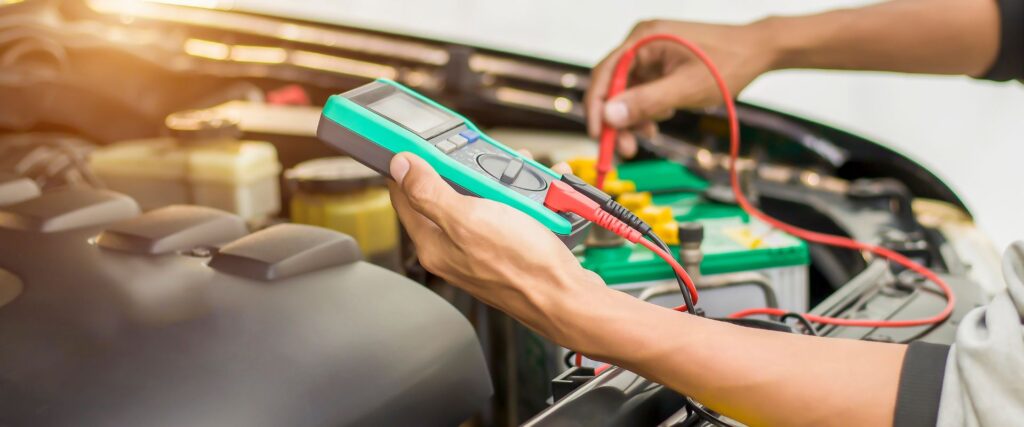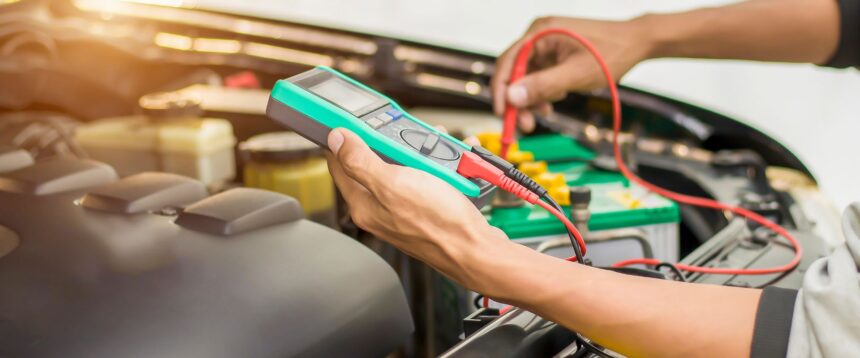Table of Contents
Auto electrical repair is a crucial aspect of vehicle maintenance and troubleshooting. It involves diagnosing and fixing electrical issues in modern vehicles, which are becoming increasingly dependent on complex electrical systems. This guide covers the fundamentals of auto electrical repair, common problems, tools required, and expert tips for efficient troubleshooting.
Understanding Auto Electrical Systems
Modern vehicles are equipped with sophisticated electrical systems that power everything from the ignition to advanced infotainment systems. Understanding these systems is vital for diagnosing and repairing faults.

Components of an Auto Electrical System
1. Battery
- Stores electrical energy to power the starter motor and other systems.
- Common issues: Dead battery, loose terminals, or sulfation.
2. Alternator
- Generates electricity to recharge the battery and power electrical components.
- Common issues: Worn-out bearings, diode failures, or a faulty voltage regulator.
3. Starter Motor
- Turns the engine over during ignition.
- Common issues: Burned-out solenoids or worn brushes.
4. Fuses and Relays
- Protect electrical circuits from overload and allow switching of high-current systems.
- Common issues: Blown fuses or faulty relays.
5. Wiring Harness
- Transmits electrical signals between components.
- Common issues: Corrosion, wear, or short circuits.
How the System Works
The auto electrical system begins with the battery, providing power for starting and basic functions. The alternator ensures the battery is charged while running, and fuses/relays protect the wiring. Together, they ensure efficient functioning of lights, wipers, air conditioning, and more.
Common Electrical Problems in Vehicles
1. Dead Battery
- Symptoms: Engine doesn’t crank, dim lights, or no response to ignition.
- Cause: Prolonged inactivity, extreme weather, or age.
2. Alternator Malfunction
- Symptoms: Battery warning light on the dashboard, flickering lights, or weak electrical performance.
- Cause: Worn components or failed voltage regulator.
3. Starter Motor Failure
- Symptoms: Clicking sound during ignition but no engine turnover.
- Cause: Electrical short, solenoid issues, or mechanical wear.
4. Faulty Wiring
- Symptoms: Intermittent issues, short circuits, or burning smell.
- Cause: Damaged insulation, rodents, or corrosion.
5. Blown Fuses
- Symptoms: Non-functional lights or accessories.
- Cause: Overloaded circuit or short circuit.
Tools Required for Auto Electrical Repair
Effective auto electrical repair requires the right tools for diagnosing and fixing problems.
Essential Tools
1. Multimeter
- Measures voltage, current, and resistance to identify electrical faults.
2. Circuit Tester
- Checks for continuity and live circuits.
3. Wiring Diagrams
- Helps trace electrical circuits and locate issues.
4. Battery Load Tester
- Tests battery health under load conditions.
5. Fuse Puller
- Simplifies the removal of fuses from tight spaces.
Advanced Tools
- Oscilloscope: For analyzing waveforms in complex circuits.
- Scan Tool: Reads error codes from the vehicle’s onboard diagnostic (OBD) system.
Step-by-Step Guide to Auto Electrical Repair
Step 1: Diagnosing the Problem
1.1 Visual Inspection
- Check for loose connections, corroded terminals, or damaged wires.
- Inspect fuses and relays for signs of damage.
1.2 Using Diagnostic Tools
- Use a multimeter to test voltage levels.
- Scan for error codes using an OBD-II scanner.
Step 2: Identifying the Faulty Component
2.1 Battery Testing
- Measure voltage with the engine off (12.6V indicates a fully charged battery).
- Perform a load test to check capacity.
2.2 Alternator Testing
- Check output voltage (typically 13.8–14.4V with the engine running).
- Inspect belts and connections.
2.3 Starter Testing
- Verify the current draw during ignition.
- Inspect solenoids and wiring.
Step 3: Repairing the Fault
3.1 Battery Repair/Replacement
- Clean terminals and secure connections.
- Replace if voltage or capacity is insufficient.
3.2 Alternator Repair
- Replace worn-out brushes or bearings.
- Ensure proper belt tension and alignment.
3.3 Starter Repair
- Replace solenoids or brushes.
- Check alignment with the flywheel.
3.4 Wiring Repair
- Splice or replace damaged wires.
- Use shrink tubing or electrical tape for insulation.
Step 4: Testing and Validation
- Reconnect components and test for functionality.
- Conduct a final system check using diagnostic tools.
Preventive Maintenance Tips
Regular Battery Care
- Clean terminals to prevent corrosion.
- Test voltage periodically to ensure it’s within the acceptable range.
Protect Wiring
- Inspect for damage and repair promptly.
- Use protective sleeves in vulnerable areas.
Alternator and Starter Maintenance
- Check belts for wear and tension.
- Lubricate moving parts where applicable.
Monitor Electrical Accessories
- Ensure lights, wipers, and infotainment systems are functioning properly.
- Replace bulbs and switches as needed.
Troubleshooting Common Scenarios
Headlights Not Working
- Check for blown fuses or burned-out bulbs.
- Inspect the switch and wiring for continuity.
Car Won’t Start
- Test the battery voltage and connections.
- Check the starter motor and ignition switch.
Dashboard Warning Lights
- Use an OBD-II scanner to identify error codes.
- Investigate specific systems indicated by the warning light.
Conclusion
Auto electrical repair is a vital skill for maintaining modern vehicles. By understanding the components and their functions, using the right tools, and following a systematic troubleshooting process, you can diagnose and fix most electrical issues efficiently. Regular maintenance and proactive care can further enhance the longevity and performance of your vehicle’s electrical system.
Frequently Asked Questions (FAQ)
1. How often should I check my car battery?
It’s recommended to check your car battery every six months or during routine vehicle servicing.
2. What are the signs of a failing alternator?
Dim headlights, a dead battery, or a burning smell from the engine bay are common indicators.
3. Can I repair a wiring harness myself?
While minor repairs like splicing wires can be done at home, complex harness issues are best handled by a professional.
4. Why does my car’s fuse keep blowing?
Repeated blown fuses usually indicate a short circuit or an overloaded circuit.
5. Is it safe to jump-start a car with a dead battery?
Yes, but ensure the jumper cables are connected correctly to avoid damaging the electrical system.
6. How can I protect my car’s wiring from rodents?
Use rodent repellents or protective coverings for exposed wires.
This detailed guide ensures you have the knowledge and tools necessary for tackling auto electrical repairs effectively. Whether you’re a DIY enthusiast or a professional, maintaining your vehicle’s electrical health is essential for optimal performance.
4o




